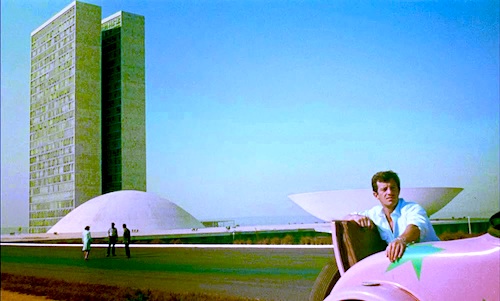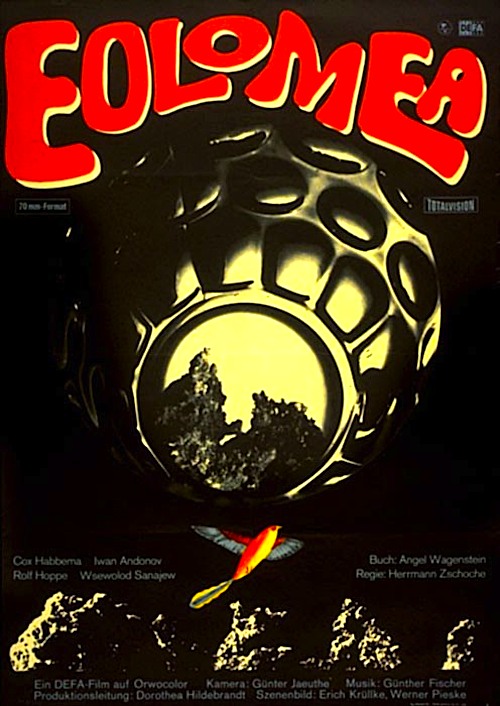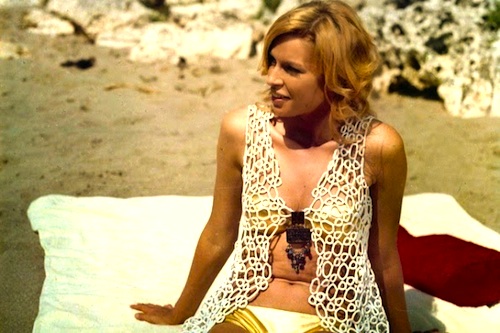By Joe Bendel. Rio gets top billing, but it will be Brasília most viewers will remember from this classic Jean-Paul Belmondo escapade. One has to wonder what unreconstructed Marxist architect Oscar Niemeyer thought of his utopian capitol city being portrayed as the stomping ground of a wealthy oligarch, but it sure looks great on-screen. Viewers’ will get a North by Northwest perspective on his monumental buildings in Philippe de Broca’s freshly restored, Oscar-nominated That Man from Rio, which opens this Friday at Film Forum, in honor of its fiftieth anniversary.
Adrien Dufourquet is not really from Rio. He hails from a French working class province. Dufourquet planned to spend his week’s leave from the army with his high maintenance kind of-sort of fiancée, Agnès Villermosa, but as soon as he arrives in Paris, she is abducted. Clearly, this is the work of the same gang that heisted a rare Amazonian statuette from the Musée de L’Homme and also kidnapped the curator, Professor Norbert Catalan, an old friend of Villermosa’s late father.
Of course, the Parisian cops are worse than useless, but Dufourquet is a tougher cat to shake. In the more innocent early 1960s (before the proliferation of PLO hijackings and September 11th), Dufourquet is able to bluff his way onboard the transatlantic flight taking Villermosa and her abductors to Rio, but nobody will listen to him once they arrive. Even though he is essentially a fugitive himself, Dufourquet continues to pursue his fiancée, with the help of several lucky turns and Sir Winston, a shoeshine boy from the favela.
It turns out there are three “Maltec” statues that might hold the key to an even greater treasure. Catalan acquired the Musée’s on a trip with Villermosa’s father and their backer, De Castro, a Bond villain-looking financier (played by Thunderball’s Adolfo Celi), who seems to own the entire city of Brasília. (Frankly, he turns out to be a more interesting character than Niemeyer might have preferred.)
One can maybe see seeds of the future French spy spoof franchise OSS 117 in Rio, but Dufourquet is far more resourceful and resilient than Jean Dujardin’s broadly comedic alter ego. His sequences shimmying around the ledges of the Brasília construction sites also bring to mind the Hitchcock classic, whereas the peaceful scenes of respite with the poor but hospitable favela residents suggest the inspiration of Marcel Camus’ international smash hit Black Orpheus. As possible influences go, those two 1959 films are pretty good ones.

With Rio, Belmondo was well into the process of transitioning from nouvelle vague icon to true superstar. To that end, he does not simply rely on his on-screen charm, giving a surprisingly physical performance as Dufourquet, both in terms of the action and slapsticky comedy. He is not afraid to look slightly ridiculous or get a little muddy for the sake of our entertainment. He also has okay chemistry with the somewhat icy Françoise Dorléac, Catherine Deneuve’s sister, who would tragically die in a car accident a little more than three years after the release of Rio.
De Broca keeps the energy level cranked up and capitalizes on the incredible Brazilian locations. There is quite a bit to see in the film, beyond the Dufourquet’s madcap romp. Good, breezy fun, That Man from Rio is recommended for fans of Belmondo and modernist architecture when Cohen Media Group’s 2K restoration opens this Friday (8/22) at New York’s Film Forum.
LFM GRADE: B+
Posted on August 19th, 2014 at 1:57pm.





